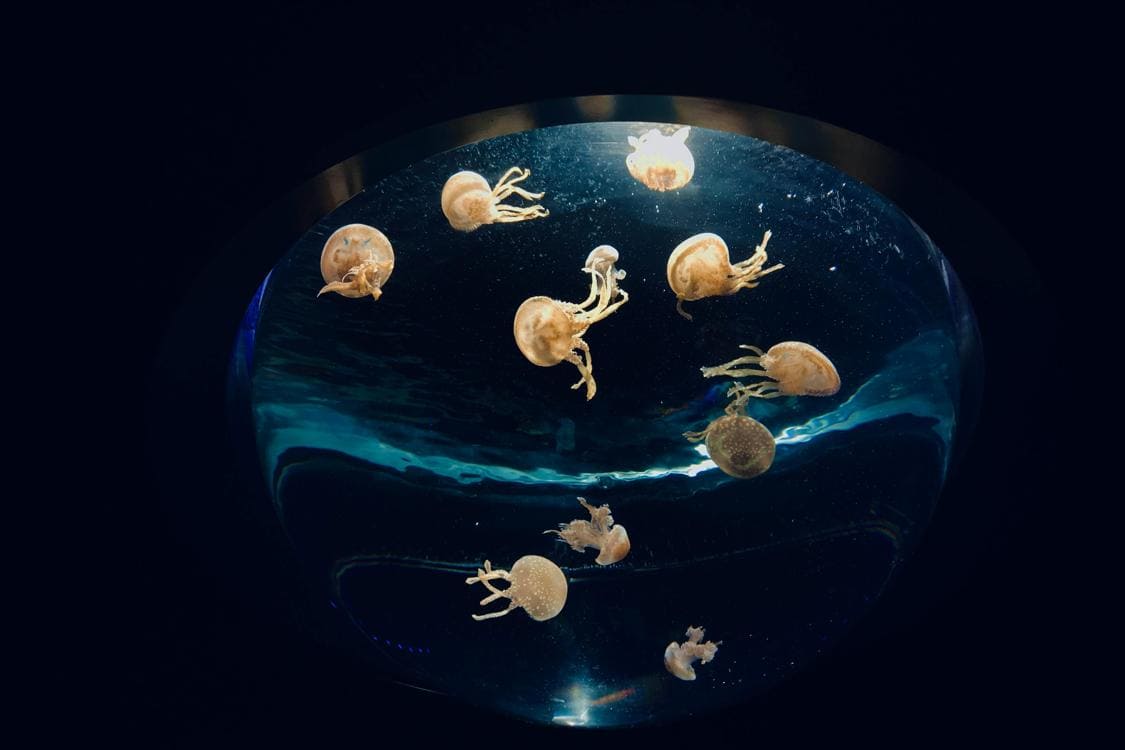Fancy Tiger shrimp are the result of deliberate breeding, and a testament to the skill, patience, and innovation of breeders. They are the result of crossing different shrimp species, selecting and inbreeding until they achieve the desired results. Females carry 15-30 eggs under their pleon after mating, and the juvenile shrimp hatch without a larval …
Unraveling the Genetics Behind Fancy Tiger Shrimp

Fancy Tiger shrimp are the result of deliberate breeding, and a testament to the skill, patience, and innovation of breeders. They are the result of crossing different shrimp species, selecting and inbreeding until they achieve the desired results.
Females carry 15-30 eggs under their pleon after mating, and the juvenile shrimp hatch without a larval stage. They are omnivorous and enjoy consuming a variety of foods, including bacterial deposits, algae films, blanched vegetables, and high-quality flake food.
Red Fancy Tiger
Fancy Tiger shrimp are a stunning addition to any aquarium. These hybrids of tiger and crystal red rare shrimp boast captivating contrasts, vivid colors, and intriguing patterns that set them apart from other Caridina species. Fancy Tigers are also remarkably easy to acclimate and tend to reach breeding age relatively quickly, making them a popular choice for new aquarium owners.
Fancy tiger shrimp are a result of extensive crossbreeding between crystal red and tiger shrimp. This morph does not occur in nature and is artificially bred exclusively for the aquarium hobby. This particular morph inherits the colorful splashes of stripes and shapes from their crystal red parent with an added tiger stripe gene from the tiger shrimp parent. The resulting offspring display vibrant coloration with distinct strength and clear separation between colors as well as bold stripes and shapes covering the entire body and head.
Some offspring will have a stronger tiger stripe gene than others and may gradually transition into black fancy tigers with each generation. This can be a desirable trait depending on the owner’s preference, as some breeders find the darkened colors more pleasing. This particular morph has been refined for generations through rigorous culling and selective breeding, which has led to high-quality specimens with excellent color opacity and coverage.
These specimens are usually a dark orange with hints of red and yellow, and as such, they were originally called “tangerine tiger shrimp.” Over time, however, the color mutation was standardized, and these fancy tiger shrimp are now referred to simply as red tiger shrimp.
Despite the heightened popularity of this variety, there are still some hobbyists who prefer to stick with the original coloration and look for pure tiger shrimp. These enthusiasts will often keep both tangerine and regular red fancy tiger offspring in the same tank to ensure that they maintain a pure genetic lineage.
In order to identify red fancy tiger shrimp with Pinto blood, hobbyists must examine the shrimp closely and make note of any irregular patterns or colors that deviate from the typical fancy tiger look. This can be a tedious process, as many fancy tiger shrimps with Pinto blood exhibit subtle variations that can be difficult to discern. In general, hobbyists are advised to seek out a breeder with an established reputation for producing high-quality fancy tiger shrimp and to follow strict breeding protocols to avoid unintentional crossbreeding.
Black Fancy Tiger
Fancy Tiger shrimps are a popular addition to the aquarium hobby thanks to their stunning appearance, peaceful behavior, and easy care. They make great tankmates for a variety of fish species and are also useful as cleaners for glass, plants, and substrate in aquascape tanks. They can live for up to 2 years when kept in suitable conditions.
This beautiful shrimp is the result of a cross between bee shrimp (Caridina logemanni) and tiger shrimp (Caridina mariae). These two species don’t exist together in nature, but this combination created an interesting breed with unique tiger patterns that are distinct from both parent lines. Black fancy tiger shrimps are a good example of this breeding technique, as they display both the thin stripes of the bee shrimp and the bold tiger pattern of the tiger shrimp.
Like their natural ancestors, black fancy tiger shrimp are omnivorous and consume both plant-based foods and protein-rich feed. They are also known for their algae-eating habits, which can help keep your aquarium tank clean and healthy. In order to thrive, these shrimp require a stable water environment with low pH values and a limited KH range. They should be fed a diet that includes high-quality flake food, specialized shrimp pellets, blanched vegetables, and algae wafers.
When preparing an aquarium for black fancy tiger shrimp, it is important to ensure that the tank is clean and free of any diseases or parasites. This is achieved by maintaining good water quality and regularly testing the water parameters. Additionally, new shrimp should be quarantined before introducing them to the main tank.
Black Fancy Tiger shrimp can be quite prone to diseases and infections, so it’s important to keep an eye out for signs of stress or illness. This may include lethargy, a loss of appetite, or unusual swimming patterns. If you notice any of these symptoms, consult a veterinarian or experienced aquarist for treatment options. Often, these shrimps can be saved by treating the disease or infection with antibiotics or other veterinary treatments. You can prevent diseases and infections by keeping your aquarium clean, feeding your shrimp a well-balanced diet, and avoiding overfeeding.
White Fancy Tiger
Fancy Tiger shrimp are admired for their vivid colors and intricate patterns, as well as their relative hardiness compared to other Caridina species. These traits have made them a popular choice for aquarium enthusiasts and beginners alike.
As with any hybrid shrimp breed, fancy tiger shrimp can produce offspring with various genetic characteristics. Some of these variations include pinto, yellow, and rusty colors. Others can be more rare, like the red or black tiger shrimp.
Maintaining pure fancy tiger blood lines is highly valued by shrimp breeders. It ensures consistent coloration and patterning and helps with the evolution of new colors and variations in future generations. It also reduces the risk of genetic diseases and increases the chances of successful breeding results.
In order to achieve the vibrant red and white colors of a fancy tiger, breeders use a combination of different techniques. First, they cross bee and tiger shrimp to create offspring with the desired coloration. Then, they breed these offspring with each other to create the next generation of fancy tigers. The process can take years to create the perfect fancy tiger.
Some breeders use Galaxy Tiger Shrimp to enhance the base color of their offspring. This is considered unorthodox because it may introduce Galaxy shrimp genes that dilute the original lineage. However, it is effective and can help to speed up the time required to produce the perfect fancy tiger.
Another way to improve the coloration of a fancy tiger is to breed it with super red or super black shrimps. This will create offspring with even more intense colors and a better gradient between the different colors. The only drawback to this method is that it can be difficult to identify the parents, so the breeder needs to keep meticulous breeding records and ensure that no offspring with undesirable colorations are produced.
Fancy tiger shrimps are generally easy to care for and can thrive in most tanks, as long as the water quality is maintained and they are fed the proper diet. The ideal tank for them is one that can accommodate a high volume of freshwater with a neutral pH and a KH between 0 and 1. A specialized feeder like shiner worms is also recommended to ensure that your fancy tiger shrimp are getting all the nutrients they need.
Lava Tiger

Fancy Tiger shrimp have quickly become a staple in the hobby, but their evolution into the stunning specimens we see today has been a long journey. The careful work of breeders has refined their appearance and adapted them to harsher environments, transforming them into vibrant and hardy creatures that thrive in the home aquarium. This process is an intricate one, involving countless generations of crossing and selection, which is why it can take so much time to bring new variants to market.
Introducing the Lava Tiger, a spectacular new Fancy Tiger variant that marks a pinnacle of innovation within the Caridina world. The Lava Tiger is characterized by a black or metallic purple/black carapace adorned with splashes of white, contrasted against a deep red or burgundy body that resembles a fancy tiger. This unique combination of traits makes the Lava Tiger stand out, highlighting the innovative achievement of successfully merging two dominant traits.
The creation of the Lava Tiger was a six-year endeavor by Hwa Shrimp, who has worked tirelessly behind the scenes to develop this variant. His dedication to this project has been unwavering, and the emergence of the Lava Tiger serves as a testament to the tireless efforts of Caridina breeders across the globe.
The Lava Tiger is a beautiful and unique addition to the collection of any Caridina enthusiast. The striking colors of this variant make it the perfect complement to any display, and its distinctive look makes it a conversation piece in its own right. In the eyes of many, the Lava Tiger represents the future of Fancy Tiger breeding, and the ongoing effort by breeders to push the boundaries of the hobby further than ever before.









